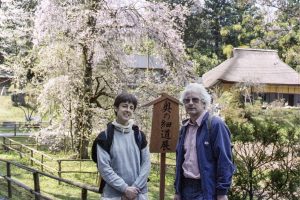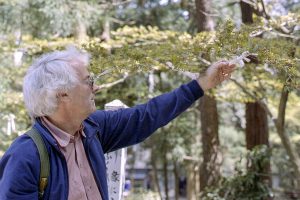Japan 1991 – Epilogue
 Strangely, there is much I can’t remember about this trip to Japan. It was nearly 30 years ago, but I remember much more from some previous travels. Whether it was the shear number of novel experiences which over-whelmed my memory at the time, or perhaps the effort to remember the kanji symbols (e.g. 東京 = Tokyo) for where-ever we were going to? I don’t know.
Strangely, there is much I can’t remember about this trip to Japan. It was nearly 30 years ago, but I remember much more from some previous travels. Whether it was the shear number of novel experiences which over-whelmed my memory at the time, or perhaps the effort to remember the kanji symbols (e.g. 東京 = Tokyo) for where-ever we were going to? I don’t know.
One disappointment with some of the tourist sights we visited – Temples and the like – was the style and amount of restoration. Thus a temple dating back several centuries might look almost brand new. In some cases it might indeed be relatively new since earthquakes and fires have been, and still are, a destructive force in Japan due to its position on the Pacific rim. But this practice of restoration (i.e. to what it once was) contrasted with the conservation (i.e. keeping it from decaying further) we are accustomed to in the UK.
The memories I do have are, perhaps, not what one might expect to come back with from a trip abroad. For example (and in no particular order):
- We were sure that a business man, whom we had asked for directions on the Tokyo underground, actually diverted his own journey to show us the way.
- We saw other business men getting falling-down drunk in evening meetings in bars because, we were told, that was how you could tell the boss he was wrong without him suffering “loss of face” – it was not you, it was the alcohol talking.
- People ignoring a collapsed person in the underground. In the UK it would be because they don’t want to “get involved”. In Japan it would not be because they would not be willing to help, but because the polite thing to do was to avoid the collapsed person “loosing face” by being helped.
- The punctuality of the Japanese trains with the arrival or departure of the Shinkansen (“bullet train”) being timed to the second.
- Seeing young schoolgirls safely walking alone through Tokyo back streets late in the evening due to attending extra “cramming” leasons to try to ensure their success in entrance exams.
- Having to change into a different colour of provided, plastic sandals as you visited different departments of the Japan Meteorological Agency; and the JMA shop which sold cheap shirts for the office worker who had worked through the night and had no time to go home for a change of clothes.
- Watching, at the Japanese earthquake warning centre in the JMA basement, a chilling simulation of a major earthquake. Lights came on across a large wall map as the seismic waves propagated across the island and as the tsunami warnings started to be received.
- Learning what it felt like to be taller than most of a crowd despite my diminutive (in western terms) 5’6″ (1.67m) height.
- Pedestrians obeying signs telling you which direction to walk around a park and not crossing the road if the red man was lit even if there was no traffic in sight.
I visited Tokyo again in 2000 and got the impression that much had changed and Japan was, for better or worse, becoming more like in the UK or USA. People seemed less obedient of road signs. It seemed more likely that a collapsed person would be helped. All Japanese learn English in school but in 1991 they were reticent in trying to use, whereas in 2000 I had people asking to practice their English with me. In 2000 the Japanese people even seemed taller!
 Why such noticeable changes in less than 10 years? I wonder if it might have been due to the internet becoming widely established in Japan the 1990’s and spreading American mores.
Why such noticeable changes in less than 10 years? I wonder if it might have been due to the internet becoming widely established in Japan the 1990’s and spreading American mores.
McDonalds got established in Japan in the 1970’s; perhaps by 2000 I was being surrounded by a new, taller, burger fed generation!
